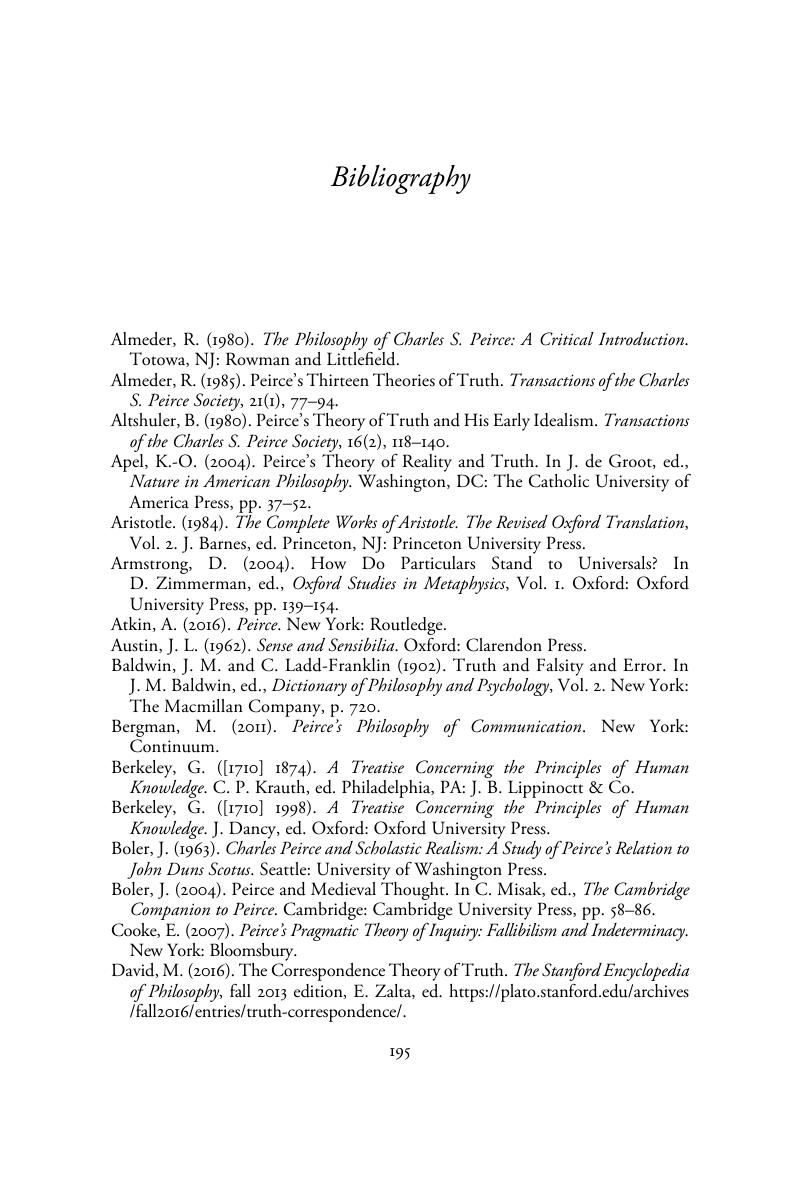Book contents
- Peirce on Realism and Idealism
- Peirce on Realism and Idealism
- Copyright page
- Dedication
- Contents
- Acknowledgments
- Abbreviations
- Introduction: Basic Realism
- Chapter 1 The Dual-Aspect Account of Truth
- Chapter 2 The Pragmatic Clarification of the Idea of Reality
- Chapter 3 Basic Idealism and Objective Idealism
- Chapter 4 The Idealistic Theory of Reality: Idealism in the Cognition Series
- Chapter 5 Generals: Early Scholastic Realism
- Chapter 6 Generals and Vagues: Late Scholastic Realism
- Chapter 7 “A Lacuna in the Completeness of Reality”: Deficit Indeterminacy
- Bibliography
- Index
- References
Bibliography
Published online by Cambridge University Press: 18 December 2017
- Peirce on Realism and Idealism
- Peirce on Realism and Idealism
- Copyright page
- Dedication
- Contents
- Acknowledgments
- Abbreviations
- Introduction: Basic Realism
- Chapter 1 The Dual-Aspect Account of Truth
- Chapter 2 The Pragmatic Clarification of the Idea of Reality
- Chapter 3 Basic Idealism and Objective Idealism
- Chapter 4 The Idealistic Theory of Reality: Idealism in the Cognition Series
- Chapter 5 Generals: Early Scholastic Realism
- Chapter 6 Generals and Vagues: Late Scholastic Realism
- Chapter 7 “A Lacuna in the Completeness of Reality”: Deficit Indeterminacy
- Bibliography
- Index
- References
Summary

- Type
- Chapter
- Information
- Peirce on Realism and Idealism , pp. 195 - 200Publisher: Cambridge University PressPrint publication year: 2017



